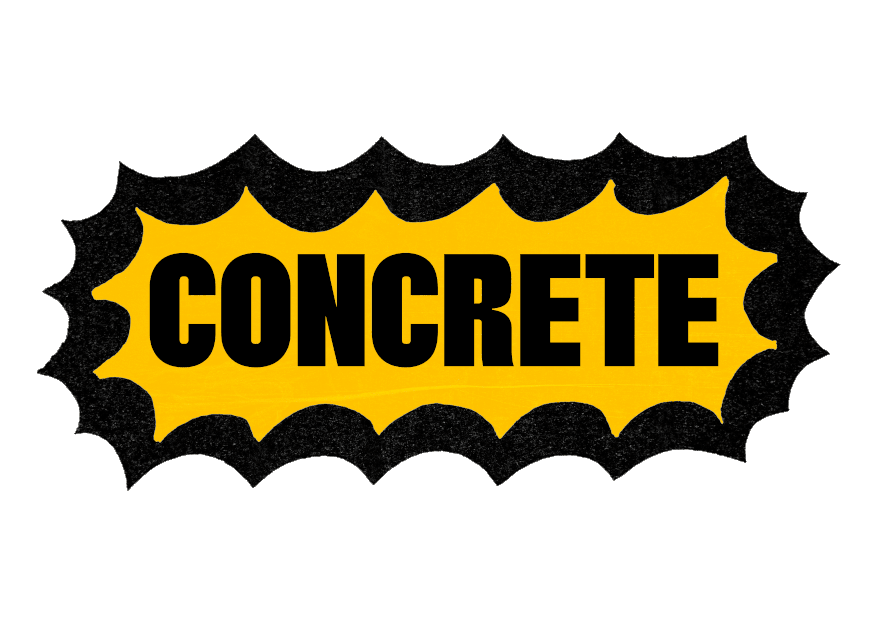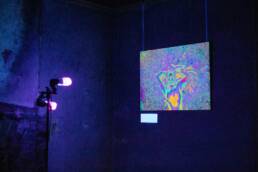Damien Hirst: Natural History opened last week at Gagosian in London. From outside the London art world bubble, CONCRETE considers Hirst’s infamous shark in a tank – and its absence from the exhibition – to offer a critical opinion on the artist in light of his latest show while upholding his influence on art today.
The Physical Impossibility of Death in the Mind of Someone Living is Damien Hirst’s most famous work. The “shark one”. Made in 1991, it sadly could not make it to Damien Hirst: Natural History, and neither could I. Hirst’s shark in a tank had rotted away. Nevertheless, the exhibition is full of other fun things; the gallery boasts that this is the first ever exhibition dedicated to Hirst’s ‘groundbreaking’ works using formaldehyde, which surveys more than twenty of the ‘most iconic examples’ of these works dating between 1991 and 2021.
First ever? Yes. Ground breaking? Not so much. Jeff Koons – America’s Hirst, who got the ball rolling when Damien was still mucking about at Leeds on an Art Foundation course – did much the same with his 1983 One Ball Total Equilibrium Tank. Koons’ tank used sodium chloride reagent. It acknowledged the condition of 1980s consumer culture by elevating the basketball, which Koons described as a symbol for the sport that is a a ‘means for people to rise up to a different level in society,’ to gallery status to interrogate the power of advertising on aspirations of social mobility. This was alluded to through the use of an object linked to the popular US Nike adverts of the 1980s. Koons’ follow up work, Three Ball Total Equilibrium Tank, took it further, and the artist suggested this work’s underlying theme was death – ‘the ultimate state of being’.
Hirst’s shtick for the bulk of his career has been contemplation of death. Or more accurately, a gesture toward the contemplation of death. My question is: why do wealthy established galleries keep returning to Hirst’s work? Laziness may be a factor. The obvious answer is that while Hirst has been put out to pasture, his work (especially these taxidermied animals in formaldehyde) remains a cash cow. Or so Gagosian thought. Reviews have filled the Culture pages of broadsheets like The Guardian and The Observer, and only The Daily Telegraph has been sympathetic. CONCRETE is slightly late to review the show, but we aren’t too upset about it because we aren’t interested in its content. We’ve seen Hirst’s art before.
The context that must be laid out before discussion of Natural History begins as thus: art has changed a lot since the 1990s, and this is partially due to Damien Hirst. However, previous successes do not excuse makers from slacking and – least of all – from playing the hits. CONCRETE is seeking to diagnose what Natural History reveals about the status of Hirst’s work in 2022.
The case of Damien Hirst can be taken as a cipher for the disconnection between the notion of artistic rebellion and the reality of market co-option. This isn’t new in 2022, and it certainly isn’t new for Hirst. The artist has self-promotion down to a fine art. His art pieces perform in such a way that regardless of whether you are fond of his work or dislike it, you are encouraged to form an opinion on it. Plus, due to a public persona two decades in the making, the viewer is compelled to return to his future works to have their beliefs that he is a philistine or a ground-breaker reaffirmed.
Hirst is a smart guy. Even as someone who feels sceptical of his artworks’ actual merit, it’s undeniable. The first decade of his career as the Young British Artist group’s de facto leader did much for kicking the art-football off the pitch of high culture and into the crowded stand of popular culture. This in isolation CONCRETE appreciates, but sadly little exists in a vacuum. As Privatising Culture author Chin-tao Wu noted, Hirst learnt his trade during the Thatcher decade. This contextual factor goes some way in a search for an explanation as to why he is ‘so well versed in self-marketing and image projection’ and why 30 years on Natural History feels less about accessibility and more about financial gain.
Hirst’s use of vitrines as the formaldehyde-filled homes for taxidermied animals is a calling card of the Hirst brand, as is his use of the typical ingredients of minimalism (visual simplicity and straight lines). Undeniably, they look cool. Yet as an object in a glass box is classically Hirstian, so is the work’s tendency to only appear conceptual.
Adjacent to the specific visual look of his art is the conventional Hirstian title. Either a joke, or an idiom, or something biblical, or something very long, or something very short. At first glance it may seem this could delineate any artist’s work, but in reality Hirst’s assemblages of objects and titles work on an almost formulaic impulse. This is something that Julian Stallabrass clocked with High Art Lite: The Rise and Fall of Young British Art, the text that finally took the YBA generation to book in 2006. Like an animal preserved in taxidermied stillness, his comments on Hirst’s output continue to ring true for Natural History.
Context and shit talking aside, what’s the deal with Hirst’s latest show? Like I said, the original “shark one” and Hirst’s most famous work is sadly not displayed. Instead, Death Denied (2006) is exhibited. That Hirst’s most infamous work had a tangible shelf life feels like an indictment on his career. Regardless, the shark exhibited is quintessential Hirstian – it’s visually stunning but sadly appears all mouth and not a lot of trousers.
Besides, putting a shark in a formaldehyde tank is a strange way to address the “big issues” Hirst has continued to concern himself with. The meaning between the title and the art object also feels a little difficult to extract. Death Denied, unlike The Physical Impossibility of Death in the Mind of Someone Living, makes more sense, but feels slightly ham-fisted as it semi-addresses the fact Hirst’s original shark decayed in its vitrine. It may imply Hirst was on the back foot.
With both works the powerless shark appears to function as an allegory. Sharks do not need to exert much effort defending themselves against other animals in the wild because they are apex predators. Instead, a shark’s survival is predominantly dependent on hunting prey. Taxidermied, this shark is unable to hunt – condemned to a preserved stillness. A connection to the work’s title is forged when this once frightening predator is taken as an allegorical device. Metaphorically castrated, it is not so fearsome now. As a shark is frightening, so too is death, Hirst wagers. If the shark is impotent in its eternal immobility, so too is the viewer’s fear of death; he can never fully grasp the concept of death because being alive means true understanding of death is an impossibility. Interestingly, Hirst’s reading of his own work goes a different way – “I wanted to make a shark in a tank big enough that you are scared of it”. Hirst and I will have to agree to disagree.
Luke White described Hirst’s original shark as an example of symptomatic art because it can ‘tell us much about our own time’ with his text Damien Hirst’s Shark: Nature, Capitalism and the Sublime. White goes on to argue that the shark can be understood as a metaphor for financial capital. Both the shark and capital are dispassionate and insular, and – like the shark – capital accumulation is ‘rapacious, insatiable and unfeeling’. White’s text was published in 2020, and his comments remain fitting when discussing Natural History.
The exhibition is somewhat of a ‘blockbuster exhibition’. The Royal Academy, the same institution that held the YBAs’ outrageous Sensation show over 25 years ago, is credited with inventing this term which fast became pejorative. Head of Exhibitions at the RA, Andrea Tarsia, considered a ‘generous description’ of this vein of art show as an ‘exhibition that captures the imagination and interest of a broad sector of the public,’ which also ‘somehow manages to be relevant’. Former Artistic Director at the RA described the blockbuster as a ‘measure of public taste’ in the same conversation. These are statements about the intended reception of exhibitions which – self serving copy aside – are actually about accruing money through ticket sales. Of course, such could be said about any exhibition featuring work by a household-name artist. The issue is that Hirst has been putting dead animals in tanks for 30 years. Natural History is comparable to The Rolling Stones insistence on touring 50 years after (I Can’t Get Me No) Satisfaction was released. With this in mind, the exhibition suspends Hirst in his own vitrine; suggesting a lack of meaningful further innovation in a 30+ year career, and freezes him in time. Hirst – once British art’s bad boy rockstar, whose influence still cannot be understated – has released a Best Of album no one asked for.
It’s strange and saddening to see previous scene makers start to lose their hair and their radicalism, much like seeing images of a middle-aged Liam Gallagher jogging is. Hirst’s impact on art should not be trivialised, and the entrepreneurial muscle emerging artists are forced to flex as state funding for art has been decimated undeniably employs the get-up-and-go attitude of Hirst’s first exhibition Freeze as a personal trainer. That as it may be, it doesn’t change the fact that if I was in London, I don’t think I’d visit the show – I think we’ve all seen enough.
There are no images in this article as Gagosian reserves all rights to them. For this reason CONCRETE will not link you to tickets to see this show. The first image is property of the artist. You can read What makes a blockbuster exhibition? here.



